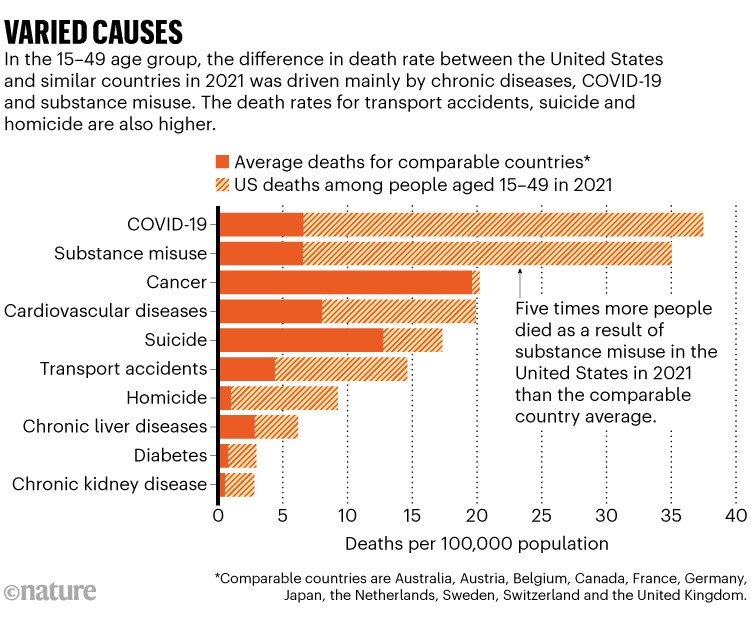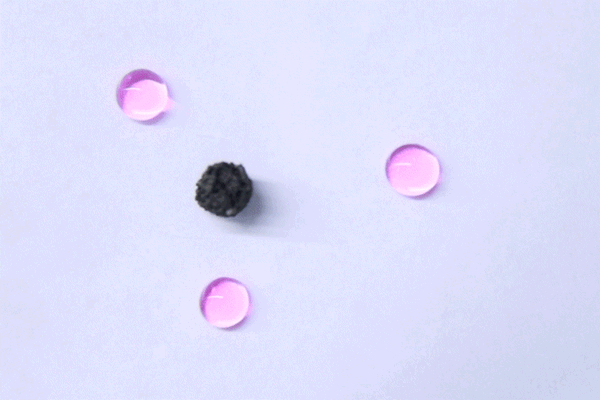You have full access to this article via your institution.
Hello Nature readers, would you like to get this Briefing in your inbox free every day? Sign up here.

Craters and holes at the Fordow nuclear facility in Iran following US strikes.Credit: MAXAR TECHNOLOGIES HANDOUT/EPA-EFE/Shutterstock
On 22 June, the United States bombed underground uranium-enrichment facilities and a nuclear research centre in Iran. Assessing the impact of the attacks requires a combination of decades of experience with the Iranian nuclear programme, access to satellite imagery, weapons knowledge and government contacts, says David Albright, one of the few researchers with the expertise for this task. But they’d rather rely on first-hand inspections, he says. “As nuclear experts, we’d like to see this done with diplomatic agreements.”
The weight-loss drug liraglutide — a GLP-1 receptor agonist similar to Ozempic — could also help to treat migraines. In a small study, liraglutide almost halved the mean number of days per month people with obesity and chronic migraine experienced a headache. The work didn’t include a control group, so some of the benefit could have been down to the placebo effect, says headache-disorder specialist Lanfranco Pellesi. Still, the results are promising enough to justify a randomized controlled trial to test the effect more thoroughly, he says.
Southern resident orcas (Orcinus orca ater) can use a piece of kelp to groom one another, an act researchers have coined ‘allokelping’. A pair of the whales place short pieces of seaweed between their bodies and rub themselves together as they swim, which exfoliates them both at once — the first time marine mammals have been seen using a tool for mutual grooming. The behaviour might be useful for getting rid of parasites on the orca’s skin, says marine biologist Sarah Fortune, or a way of regulating their temperature.
Reference: Current Biology paper
Features & opinion
“We are the sickest nation in the world,” said top US health official Robert F. Kennedy Jr in March. “We have the highest rate of chronic disease.” His diagnosis holds some truth: relative to other similarly wealthy nations, the United States has the shortest life expectancy; and chronic disease, including heart disease and obesity, are key contributors. But his plans to ‘Make America Healthy Again’ risk worsening public health and so far fail to address several key drivers of ill health, say health-policy specialists. They offer these insights into how to improve life expectancy in the US:
• Tackle substance misuse, car crashes, and suicides and homicides using guns, which kill many more young people in the US than in comparable countries.
• Americans’ life expectancy varies in different states, racial and ethnic groups— so policies must take these population differences into account.
• The US is alone among comparable nations in not having universal health-insurance coverage. This prevents some people from getting diagnoses and treatment early on.
• Proposed cuts — for example, to the low-income public health-insurance system, Medicaid — and efforts to undermine trust in vaccines threaten some of the country’s most cost-effective health strategies. Spending on disease prevention is “where the big gains are to be made on population health”, says health-care analyst Thomas Bollyky.

Source: Peterson-KFF Health System Tracker
The death rate has been falling much more slowly in the United States than in peer countries — and it spiked drastically owing to COVID-19. Because young deaths erase more years of life than do older ones, they drag down overall life expectancy.
A synthetic ‘killswitch’ protein, just 17 amino acids long, can jam droplet-like structures that coordinate key cellular processes linked to cancer, viral replication, gene expression and more. The droplet-like structures have no membranes and help organize proteins and RNA molecules so that they can perform specific tasks efficiently and precisely. The killswitch infiltrates the droplets and fixes them in place. In a pair of experiments, researchers found that the killswitch could reduce the proliferation of leukaemia cells in mice and also curtail the production of viral particles in infected cells.
At the end of each semester, physicist and educator Brian Lane gives his students a chance to claw back some points by guiding ChatGPT through their lowest-scoring exam. Lane shares one example, in which the chatbot makes stumbling attempts to answer the question, ‘Why does a ping-pong ball require more time to fall than to rise to the same height?’ The exercise is good at helping to identify strengths and weaknesses in students’ understanding, says Lane. But it also reveals a worrying optimism about ChatGPT’s outputs, which can appear seductively clear and simple while being riddled with faults.
Image of the week

This miniscule robot, about the size of a pencil-top eraser, is made of a soft polymer, pitted with holes, that attracts liquid. It’s embedded with magnetic particles, so it can be controlled remotely using magnetic fields. Scientists routinely need to manipulate drops of liquid, but current methods typically have either limited capabilities or a tendency to contaminate the droplets. This prototype could someday help to start chemical reactions, or split large droplets into smaller ones in industrial or medical applications. (Nature Research Highlight | 3 min read, Nature paywall)
Reference: Nanotechnology and Precision Engineering paper (Lin Gui)
Today I’m reeling from an optical illusion that shows how our background fundamentally changes how we see the world. Take a look at the Coffer illusion, created a few years ago for a psychology study. Then let me know what you see — circles or rectangles? A study found that those of us who grew up surrounded by rectangular architecture will see that shape, whereas a life lived in round huts means spotting circles first.
I wonder if this is why I can never find Leif Penguinson’s hiding place in our Friday penguin-search puzzle: my hometown had a tragic lack of penguin-shaped stimuli. While I ponder the other effects of living in a ‘carpentered world’, why not send me your feedback on this newsletter? Your e-mails are always welcome at [email protected].
Thanks for reading,
Flora Graham, senior editor, Nature Briefing
With contributions by Jacob Smith
• Nature Briefing: Careers — insights, advice and award-winning journalism to help you optimize your working life
• Nature Briefing: Microbiology — the most abundant living entities on our planet — microorganisms — and the role they play in health, the environment and food systems
• Nature Briefing: Anthropocene — climate change, biodiversity, sustainability and geoengineering
• Nature Briefing: AI & Robotics — 100% written by humans, of course
• Nature Briefing: Cancer — a weekly newsletter written with cancer researchers in mind
• Nature Briefing: Translational Research — covers biotechnology, drug discovery and pharma


